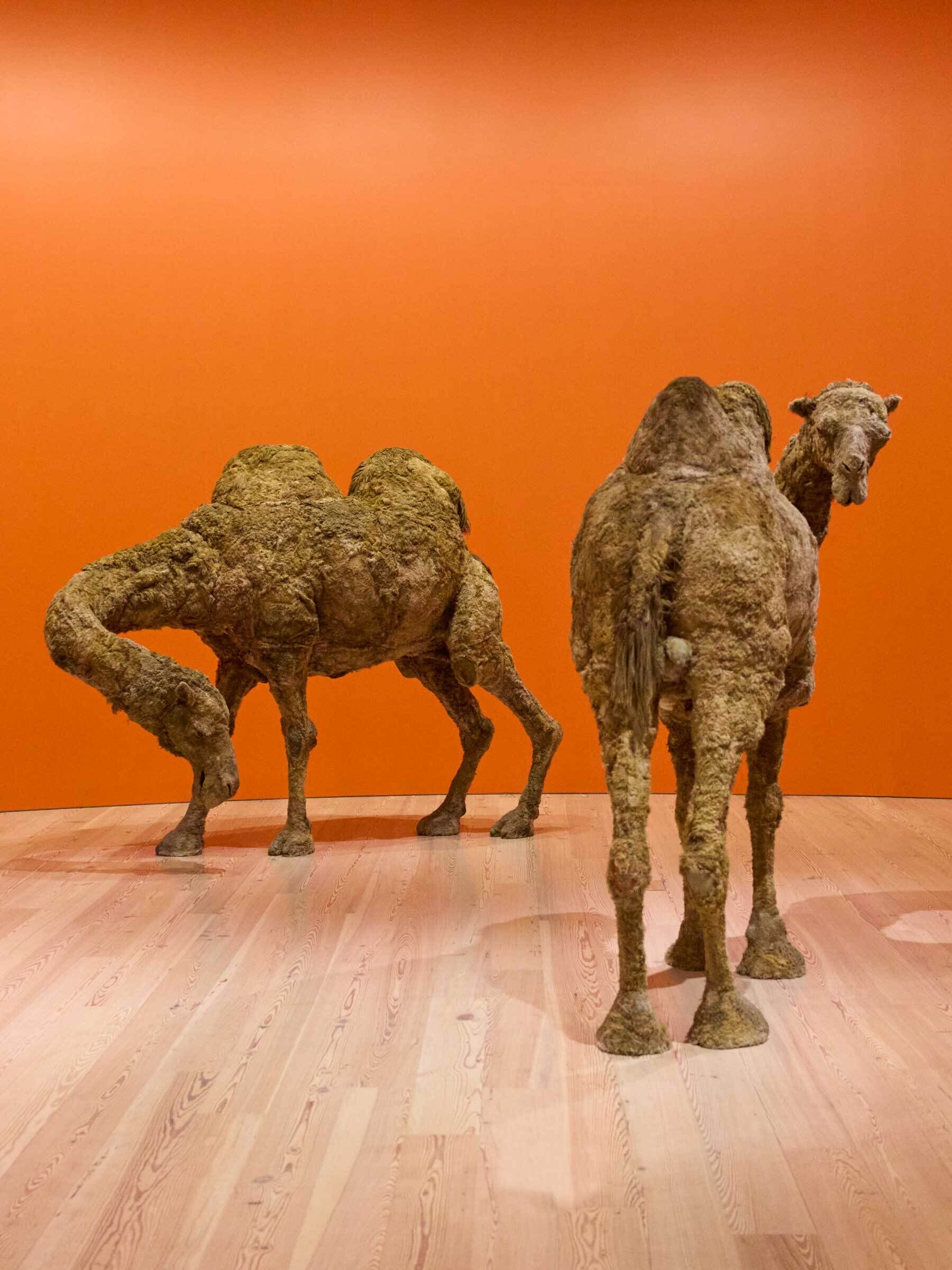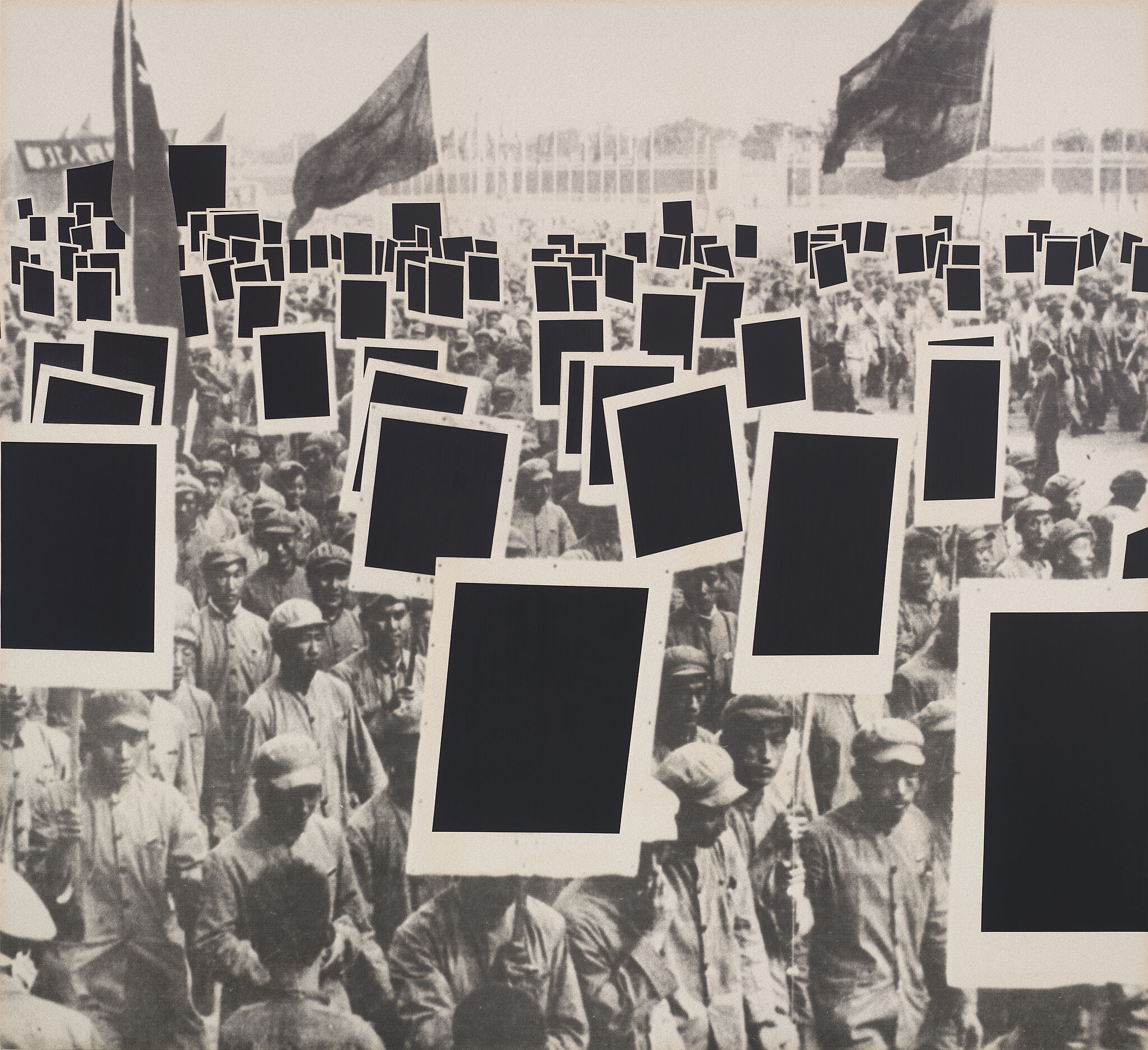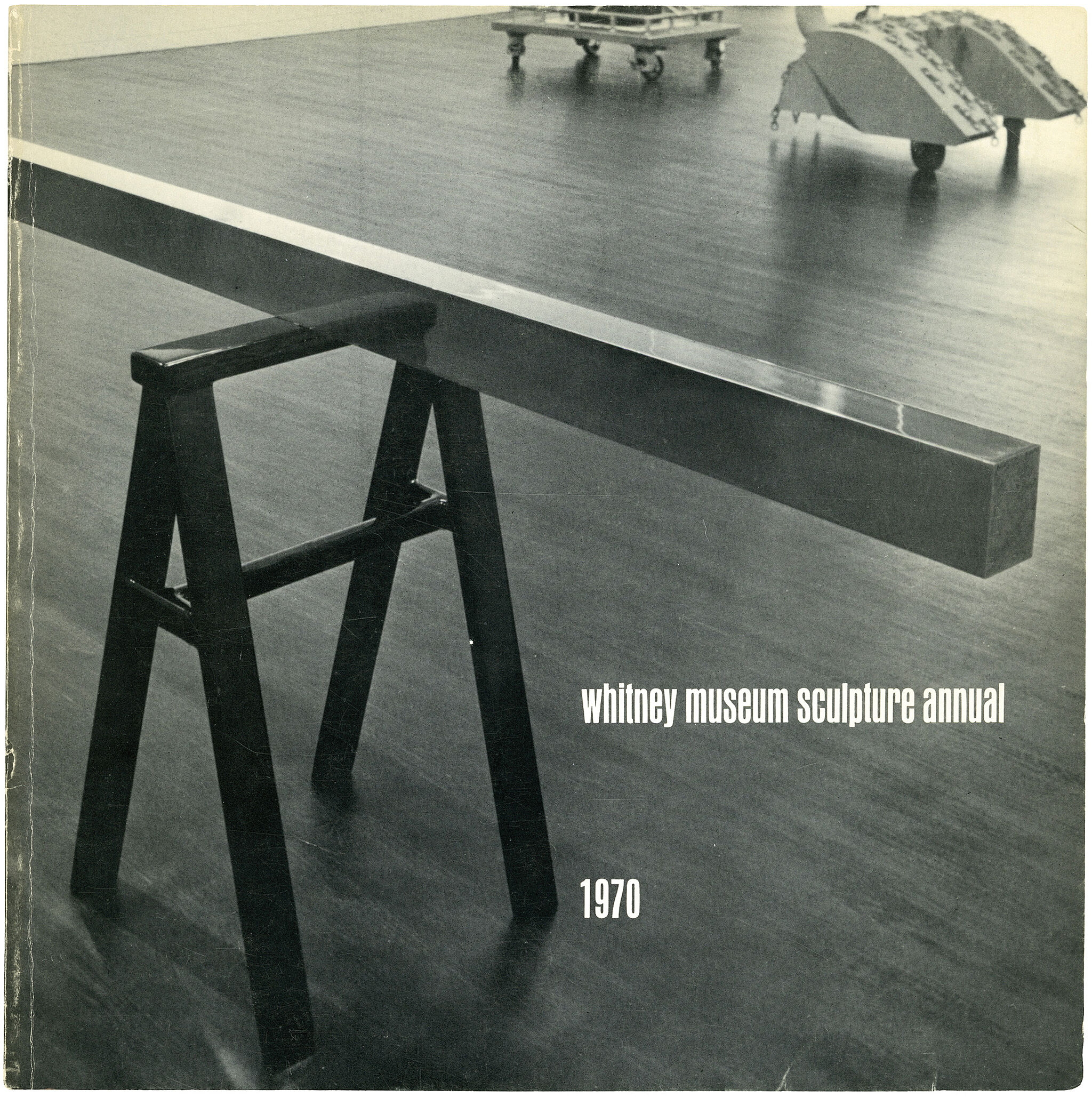Melvin Edwards
1937–
Melvin Edwards’s sculptures develop from a sustained exploration of welded steel, a material he began to use as a student at the University of Southern California in Los Angeles. In 1967 Edwards moved to New York, where he exhibited with other African American artists such as Sam Gilliam and William T. Williams. Drawing on the lineage of assemblage and making forceful use of raw materials, Edwards’s sculptures incorporate found objects such as chains, barbed wire, and sharp pieces of tools that make implicit reference to violence—as in his best-known series of works, Lynch Fragments, which he began making in 1963 during the time of the civil rights movement.
In his one-person exhibition at the Whitney in 1970, Edwards presented a group of sculptural installations that used barbed wire and chains as sculptural elements and also as a way of drawing in three dimensions and defining spatial volumes, using strategies of installation that some critics have related to Minimalist and Postminimalist art. Edwards’s work inflected these prevailing artistic languages with political content, drawing on barbed wire’s history as both an “obstacle and enclosure.” He utilized barbed wire for Avenue B Wire Vari #1, spraying paint over the wire, which, when removed, left behind ghostly forms of overlapping striations. Edwards then deepened certain areas with pen. The result is an abstract image that also recalls imagery of imprisonment, violence, and the urban landscape—part of a moment in the late 1960s and 1970s marked by experimentation with materials, abstraction, and the political meanings of art.
Introduction
Melvin Edwards (born May 4, 1937) is an American abstract sculptor, printmaker, and arts educator. Edwards, an African-American artist, was raised in segregated communities in Texas and an integrated community in Ohio. He moved to California in 1955, beginning his professional art career while an undergraduate student. Originally trained as a painter, Edwards began exploring sculpture and welding techniques in Los Angeles in the early 1960s, before moving again to New York in 1967.
Edwards is best known for his Lynch Fragments sculptures, a series of small, abstract steel assemblage sculptures made with spikes, scissors, chains, and other small metal objects welded together into wall reliefs, which he first began making in 1963. In addition to their titular reference to lynching, these works have been described by the artist as metaphors for the struggles and successes of African Americans living in the United States.
He is also known for his minimalist sculptural environments built with strands of barbed wire and chain beginning in the late 1960s; his kinetic Rockers sculptures, painted metal works built on discs that can rock back and forth; and his monumental outdoor sculptures, often characterized by the use of straight-edged triangular, circular, and rectangular metal forms along with oversized chain motifs. Edwards has also worked extensively in printmaking, beginning in college and continuing throughout his career. Edwards's works, despite containing many elements of abstract art, often deviate from a pure expression of abstraction through explicit references to African-American and African history as well as contemporary politics and events in their titles and underlying materials.
Edwards has mounted more than a dozen solo exhibitions in museums and galleries across the United States and internationally. In 1970, he was the first African-American sculptor to receive a solo show at the Whitney Museum in New York. Following a period of decline in attention from curators and critics in New York in the late 1970s and 1980s, Edwards's art was included in several high-profile national and international exhibitions in the 2000s and 2010s, leading to an increase in critical attention toward his work both within the art world and more broadly. Edwards has also taught art in several universities across the country, including a 30-year teaching career at Rutgers University, from which he retired in 2002. He lives and works between upstate New York, New Jersey, and Senegal.
A traveling retrospective of Edwards's work is currently on view at the Palais de Tokyo in Paris through February 15, 2026.
Wikidata identifier
Q3305305
Information from Wikipedia, made available under the Creative Commons Attribution-ShareAlike License . Accessed December 23, 2025.
Introduction
Melvin Edwards is an African-American sculptor who was born in Houston, Texas. His work consists mainly of metal outdoor sculpture. He was educated at the University of Southern California and the University of California, Los Angeles.
Country of birth
United States
Roles
Artist, educator, painter, sculptor, teacher
ULAN identifier
500108626
Names
Melvin Edwards, Mel Edwards, Melvin E. Edwards
Information from the Getty Research Institute's Union List of Artist Names ® (ULAN), made available under the ODC Attribution License. Accessed December 23, 2025.



